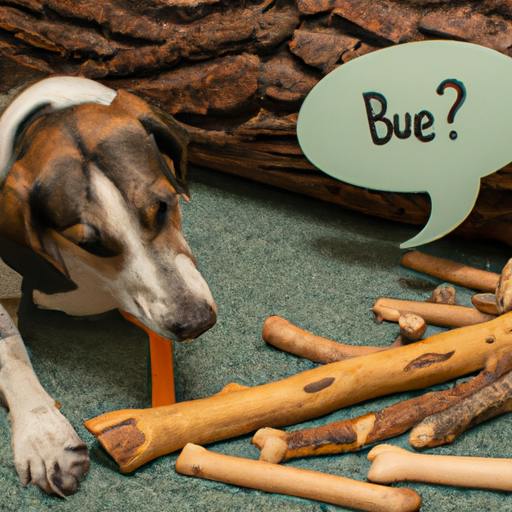Understanding Your Dog’s Chewing Behavior
You may have noticed your dog chewing on wood, be it furniture, sticks in the yard, or even firewood. This behavior is not only destructive but can also be harmful to your furry friend. But why do they do it?
Chewing is a natural behavior for dogs. They chew for various reasons:
- Teething: Just like human babies, puppies chew to relieve the discomfort of their growing teeth.
- Boredom: Dogs, especially active breeds, need constant stimulation. If they don’t get it, they may resort to chewing.
- Anxiety: Dogs can also chew to relieve stress or anxiety.
The Risks of Wood Chewing
As a caregiver, it’s crucial to understand the risks associated with your dog’s wood-chewing habit:
- Splinters: Wood can easily break into sharp pieces, risking injuries to your dog’s mouth and throat.
- Toxicity: Some types of wood, like yew or black walnut, are toxic to dogs.
- Blockages: If swallowed, wood pieces can cause blockages in your dog’s digestive system.
How to Discourage Wood Chewing
Here are a few strategies to help curb your dog’s wood chewing habit:
- Provide plenty of chew toys.
- Keep your dog mentally and physically stimulated.
- Supervise your dog when they’re outside.
- Keep wood items out of your dog’s reach.
The Role of Training and Positive Reinforcement
Training plays a crucial role in modifying your dog’s behavior. Use positive reinforcement, rewarding your dog for choosing their toys over wood. Remember, patience is key. Changes won’t happen overnight.
When to Seek Professional Help?
If your dog’s wood chewing behavior continues despite your best efforts, it might be time to seek professional help. A professional dog trainer or a veterinary behaviorist can help address the issue effectively.
Frequently Asked Questions
Q1: Is wood chewing dangerous for my dog?
Yes, it can lead to splinters, toxicity, and blockages.
Q2: Are some types of wood more harmful than others?
Yes, some woods, like yew or black walnut, are toxic to dogs.
Q3: How can I stop my dog from chewing wood?
Provide chew toys, keep your dog stimulated, supervise outdoor time, and keep wood items out of reach.
Q4: Will training help stop my dog’s wood chewing habit?
Yes, positive reinforcement training can be very effective.
Q5: When should I seek professional help?
If your dog’s wood chewing continues despite your efforts, you should consult a professional.



